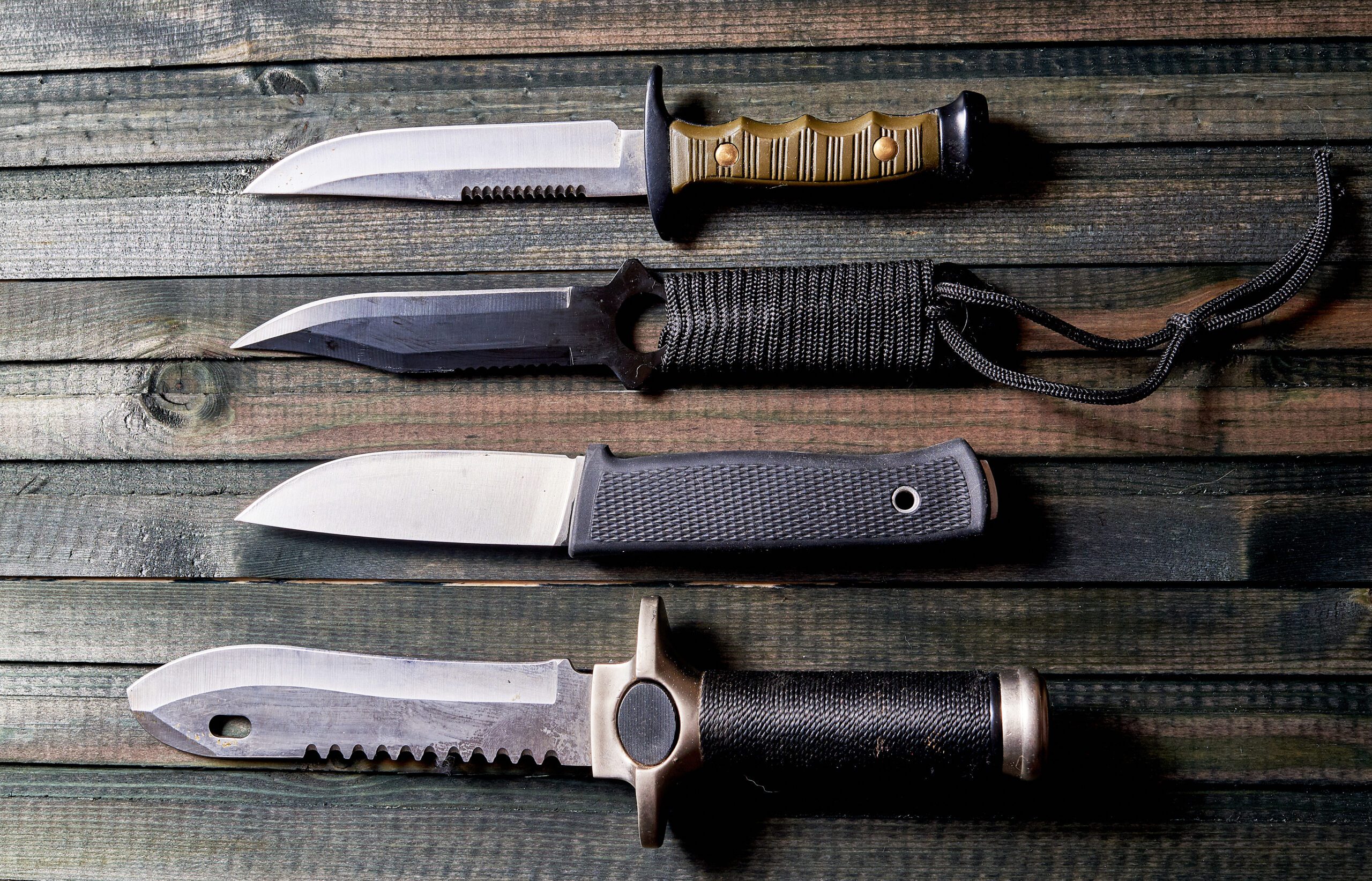A survival knife, specifically a fixed blade knife, is more than just a tool—it’s a lifeline in survival situations. Imagine you’re in the wilderness, or maybe even in a post-calamity scenario where resources are limited. In these situations, a survival knife becomes essential. These knives, fixed blade in design, are sturdy, reliable, and multi-functional. Whether you need to cut rope, build a shelter, prepare food, or even defend yourself, a belt knife serves all these purposes. So let’s delve deeper into the world of survival knives and understand why they are a must-have in any survival gear.
Table of Contents
Anatomy of a Survival Knife
A survival knife, particularly a fixed blade knife, has several unique features that make it a versatile and invaluable tool. At the heart of it, knives fixed blade in design are built to be robust and resilient. This means it’s less likely to break under pressure – a critical feature when your survival might depend on it. The blade of a survival knife is typically between four to six inches – long enough to handle various tasks, but not so long that it becomes unwieldy.
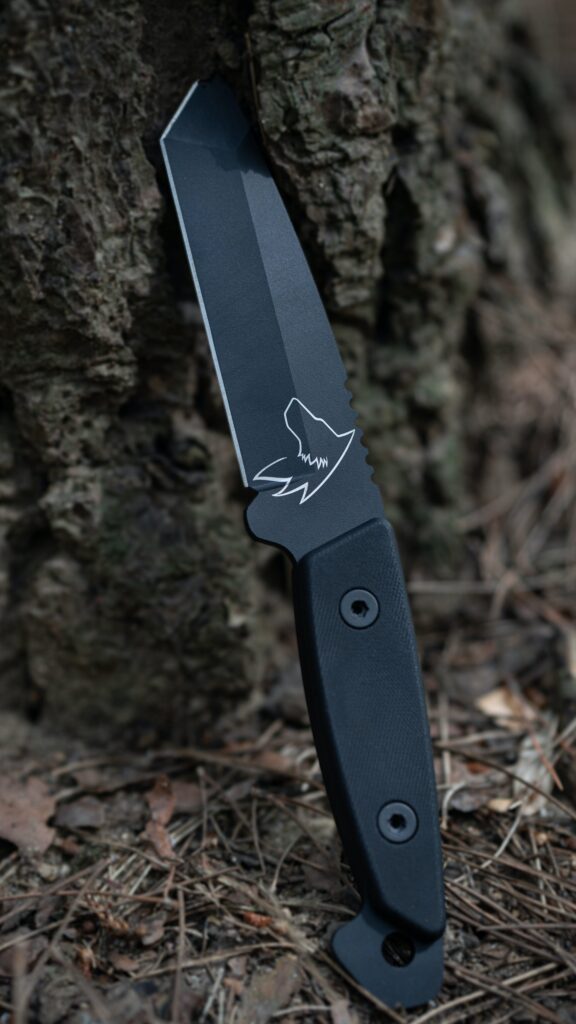
One key component is the sharp, pointed tip which can be used for piercing or prying. The blade’s edge, which can be single or double-edged, serves to cut, slice, and chop, be it for food preparation or crafting a survival shelter. Most survival knives also feature a flat edge on the knife’s spine, which you can use as a hammering tool.
The handle of the survival knife, often wrapped for a better grip, is designed to fit comfortably in your hand, ensuring you can use it effectively without causing blisters or discomfort. Some survival knives even have a compartment inside the handle, a useful space to store small survival items.
Lastly, let’s not forget the value of a belt knife. It’s designed to be carried conveniently on your belt, which means it’s always within reach when you need it. This easy accessibility can make all the difference in a survival situation.
Choosing the Right Survival Knife
When you’re choosing a survival knife, several factors come into play. First and foremost, consider the knife’s durability. Remember, a survival knife isn’t just a tool, it’s a lifeline. Therefore, ensure your choice is a sturdy fixed blade knife. Unlike folding knives, knives with fixed blades don’t have mechanical parts that could fail under pressure.
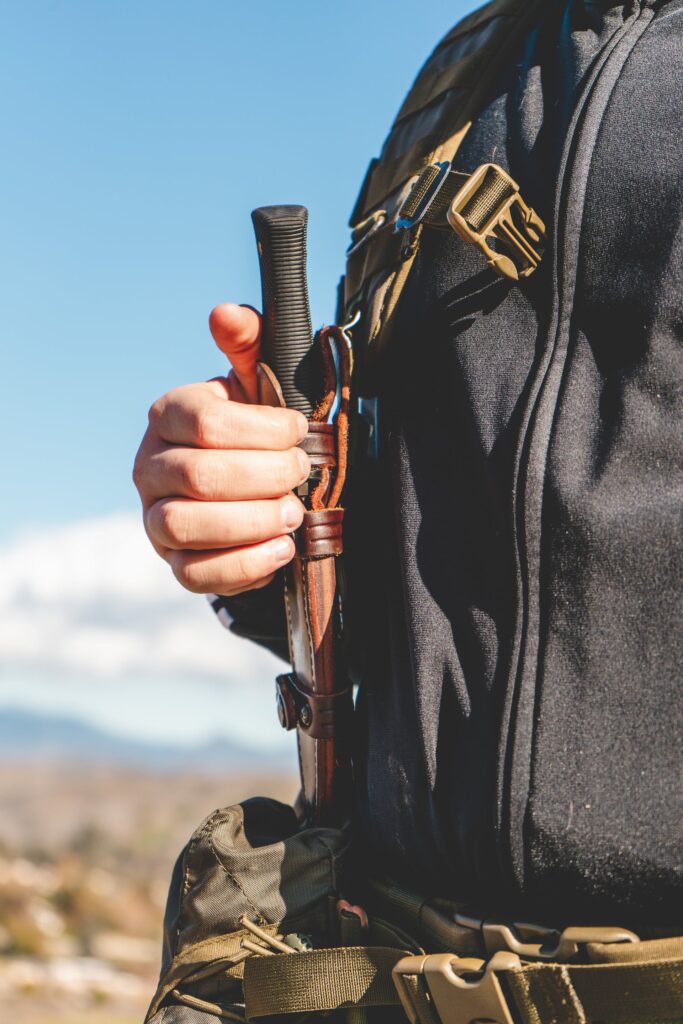
Next, look at the knife’s size. A good survival knife should have a blade length between four to six inches. This size is optimal for handling a variety of tasks without becoming difficult to manage. Too big, and you might find it unwieldy; too small, and it might not be versatile enough.
The type of blade edge also matters. Single-edged blades are common for survival knives as they provide a sharp edge for cutting and a flat edge that can be used as a hammering tool. However, some prefer double-edged knives for their cutting versatility.
The handle of the knife should offer a good grip to prevent accidents and ensure comfortable usage over extended periods. Some knives even feature a compartment in the handle for storing small survival items, adding to their utility.
Finally, consider how you will carry the knife. A belt knife design is ideal because it keeps your tool within easy reach. This feature might seem minor but can be a lifesaver in a survival situation.
When comparing brands and models, take note of how they stack up in these areas. The right survival knife will combine functionality, durability, and comfort, offering you the best chance of survival in any situation.
Top Survival Knife Choices

Gerber Gear Ultimate Survival Knife: A well-rounded survival tool, the Gerber Gear Ultimate Survival Knife boasts a high carbon stainless-steel blade with a durable and comfortable rubber grip handle. It has a full tang design for extra strength and features a lanyard hole with a whistle, a fire starter, and a diamond blade sharpener. A great choice for anyone seeking a reliable survival knife.

Fallkniven A1 Fine Edge Fixed Blade Knife: Renowned for its robustness, this knife has a VG10 steel blade and Kraton handle, providing an excellent balance between hardness and toughness.

KA-BAR Becker BK2 Campanion Fixed Blade Knife: An excellent all-around choice, this knife features a durable 1095 cro-van steel blade and a comfortable Grivory handle.

Morakniv Companion Fixed Blade Outdoor Knife: This Swedish brand offers affordable quality. The Companion knife features a Sandvik stainless steel blade and a patterned, high-friction grip handle.

ESEE Knives 6P Fixed Blade Knife: This knife is popular for its 1095 steel blade and grey Micarta handle. It is highly durable and versatile, suitable for many survival tasks.
Practical Uses of a Survival Knife
A survival knife is not just a tool; it’s a lifeline when you’re in the wilderness. It serves multiple roles, from helping you build a shelter to catching and preparing food, and even as a weapon for self-defence. For example, a fixed blade knife can be used to cut branches and foliage to build a makeshift shelter. The sturdy, sharp blade can quickly and efficiently cut through the material, saving you time and energy.
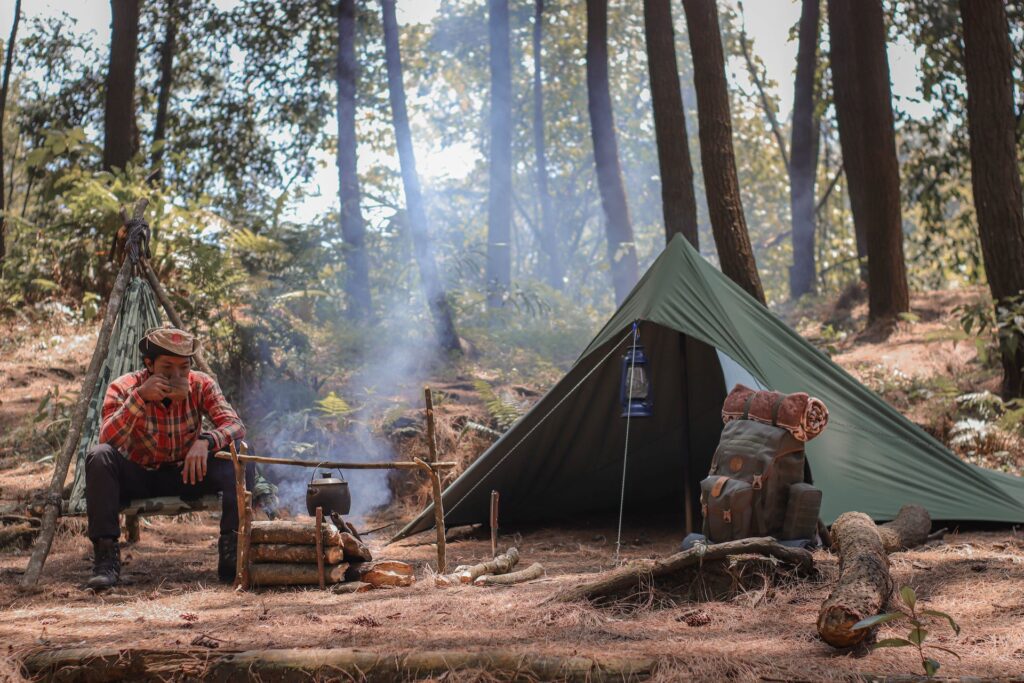
In survival situations, food procurement can be a daunting task. Here, the survival knife comes into play again. With your belt knife, you can make traps to catch small game or fish. The fine edge of the knife is perfect for carving intricate details into the wood. It can also be used to clean and prepare the caught game for cooking.
The survival knife’s role doesn’t end here. In dire circumstances, it can also be used for self-defence. The fixed blade knife’s robust construction and sharp edge can be a formidable defensive tool against potential threats in the wilderness.
Finally, survival knives have been instrumental in real-life survival situations. There are countless stories of hikers, hunters, and adventurers who have found themselves in perilous situations, with their survival knives being their only tool. The fixed blade knife’s versatility and reliability make it a quintessential piece of survival gear. It’s not an exaggeration to say that in many cases, a good survival knife can indeed make the difference between life and death.
Maintenance and Safety
Maintaining your belt knife is crucial for its longevity and effectiveness. Regularly cleaning your fixed blade knife prevents rust and keeps the blade sharp. After using your knife, always wipe it clean with a soft cloth. Oil the blade of knives fixed blade to prevent moisture from causing damage. Also, make sure to sharpen your knife regularly. A dull belt knife requires more force to use, increasing the risk of accidents.
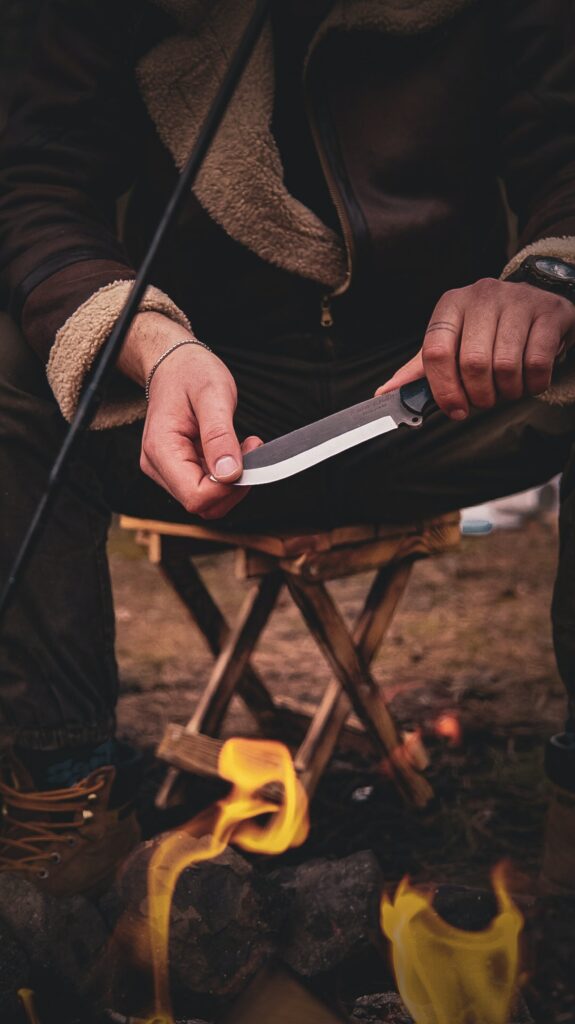
Safety with a survival knife is paramount. Always cut away from your body, not towards it, to minimize the risk of injury. When not in use, keep your knife sheathed. Unsheathed knives can cause accidental injuries. Never leave your belt knife unattended, especially in a place accessible to children. Understanding the potential dangers that come with mishandling a survival knife is a step towards safer usage.
Remember, a survival knife is not just a tool; it’s a lifeline in survival situations. Taking good care of it and using it safely ensures it can perform when you need it most.
Conclusion
In summing up, the survival knife is an essential piece of gear for outdoor adventures. This fixed blade knife, correctly maintained and used, can literally be a life-saver. The versatility and reliability of the survival knife, often known as a belt knife, make it indispensable. Regular cleaning, oiling, and sharpening will ensure the longevity and effectiveness of your knives fixed blade.
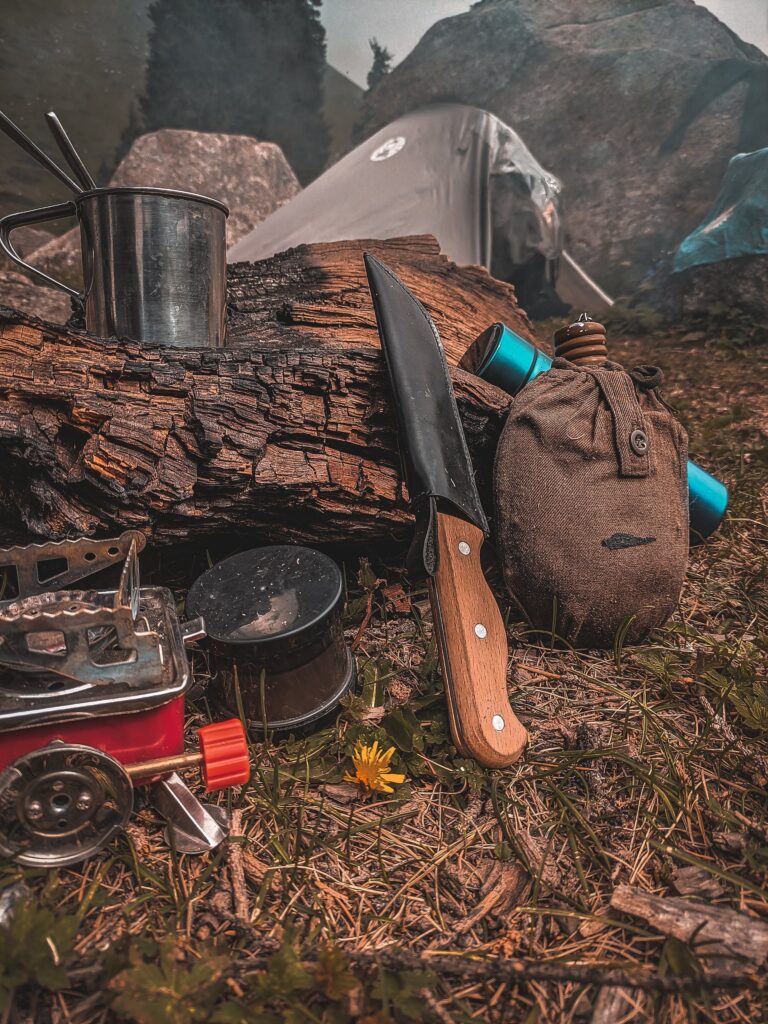
Use your belt knife with safety at the forefront of your mind. Remember to always cut away from your body and sheath the knife when not in use. Keeping your knife out of the reach of children is another critical safety measure. Let’s not forget that in survival situations, a knife is more than just a tool; it’s a lifeline.
Having a survival knife on your belt while on an outdoor expedition is a wise choice. Whether you’re an experienced adventurer or a newbie, the survival knife should be an integral part of your gear. It’s durable, reliable, and could make the difference when you need it most. So, why not consider adding a survival knife to your outdoor adventure gear? It’s a small investment for a tool that offers immense value.
For more outdoor camping advice and products visit our camping and adventure sections.

